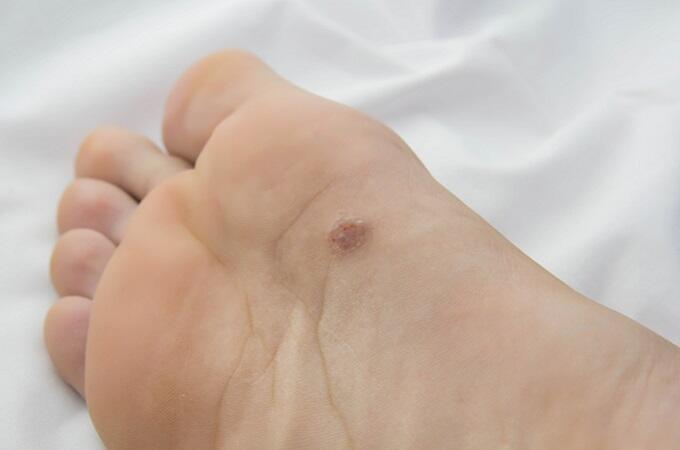A research group led by Professor Yoshimasa Nobeyama of the Department of Dermatology at the Jikei University School of Medicine has discovered a correlation between tinea pedis (athlete's foot) and the development of melanoma (malignant melanoma) of the sole. Treatment of tinea pedis may be beneficial to prevent plantar melanoma. The results were published in the May 6 issue of The Journal of Dermatology, an international journal.

Melanoma is a type of cancer that starts in the melanocytes and has a high mortality in advanced cases. The development of plantar melanoma was assumed to correlate with physical stimuli. However, the study group questioned this assumption as no previous reports show an increased incidence of melanoma in track and field athletes who are presumably exposed to frequent plantar stimuli. In this study, the research group studied the possibility that cancer is caused by athlete's foot, a chronic infection by dermatophytic fungi such as Trichophyton spp., just like where chronic infection of the stomach by Helicobacter pylori can cause stomach cancer.
The subjects of the survey were 30 patients with plantar malignant melanoma (malignant melanoma group) and 84 patients with plantar skin lesions other than malignant melanoma (nonmalignant melanoma group, including those examined for suspected tinea pedis). The plantar surfaces of these patients were examined under a microscope. The results showed that 60% of patients in the malignant melanoma group and 29.8% of patients in the nonmalignant melanoma group had tinea pedis. The prevalence of tinea pedis in the malignant melanoma group was higher than that in the nonmalignant melanoma group, although the latter group included patients who were examined because they had symptoms of tinea pedis. Results of the chi-square test and multivariate analysis indicated the possibility that tinea pedis was involved in the development of plantar malignant melanoma. Moving forward, they plan to elucidate the link between tinea pedis and carcinogenesis at the molecular level.
Nobeyama said, "It has been pointed out that more patients with melanoma in Japan are in an advanced stage when they are first examined, compared with those in the United States. I believe this is because awareness of melanoma in Japan is not as high as that in the United States. I have always felt frustrated about this aspect in clinical practice when I have seen patients with advanced disease. We decided to issue this press release because we thought this can be an opportunity to promote awareness in Japan."
"Although previous studies have noted an association between diabetes and carcinogenesis, we could not statistically validate the association in the present analysis. We believe this is because of the small number of patients included in the analysis. The present analysis showed a statistically significant difference for tinea pedis, although the number of participants in the analysis was so small that no significant difference was detected for diabetes. Therefore, we think that tinea pedis is more strongly implicated in plantar melanoma than diabetes is."
Journal Information
Publication: The Journal of Dermatology
Title: High prevalence of dermatophytosis of the feet in acral melanoma of the foot
DOI: 10.1111/1346-8138.17256
This article has been translated by JST with permission from The Science News Ltd. (https://sci-news.co.jp/). Unauthorized reproduction of the article and photographs is prohibited.




